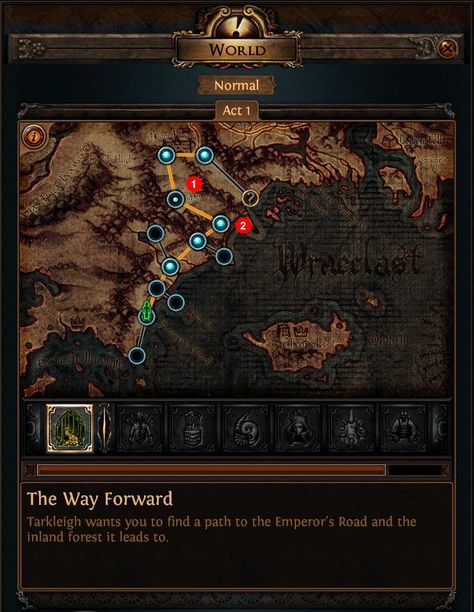
Oriath
General Info

| Location Name | Oriath |
|---|
Overview
Distinguished by majestic buildings, white marble towers and grand courtyards, Oriat is the epitome of luxury and grandeur. But beneath the decadence lies a much darker and more brutal reality. The almost white tranquility of the cityscape is marred by the intolerable condition of the War slaves, who are forced to work day and night to satisfy the Templars' insatiable thirst for luxury and power. Set on the east coast of the mainland, the island city is a very important cog in the game's story. It is from here that the exiles are ferociously sent to Vraeclast. Furthermore, Act V of the game takes place in the oppressive catacombs and bustling streets of Oriata, setting the stage for the final battle.
But Oriath isn't all combat and class differences. The city also prides itself on its advances in theurgy and thaumaturgy, which fuel its dominance over other societies. But it is this unquenchable lust for power and ruthless exploitation of the weak that ultimately leads to his downfall.
In terms of gameplay, Oriath offers a refreshing change of scenery from the faded beauty of Wraeclast. With its cobbled streets, majestic architecture and a skyline adorned with Victorian filigree, this is a place not to be missed. But as you dig deeper, you will see the blood-soaked reality of this paradise built on suffering. As such, Oriath is a perfect example of how Path of Exile perfectly integrates gameplay with storytelling.
History
Oriat was founded by Emperor Chitus, built as a beacon to further civilize a world plagued by tribal warfare and violence. The city quickly became a center of power and influence, and its founding led to the formation of the Knights Templar, a regime that would hold great power for centuries to come. But this expansion did not come without a price: the native Karui people were enslaved to build and maintain the ever-expanding infrastructure, sowing the seeds of future conflicts. The city is also home to the infamous Templar Laboratory, a center of incredible arcane power where the secrets of thaumaturgy are carefully studied and harnessed. But through such powerful means, the fate of the city became increasingly intertwined with the movements of the divine beings it sought to control.
As the city grew, tensions rose due to slave revolts led by the Karui tribes. This culminated in the fall of the Templar Order and the loss of power of the ruling classes, an event that shook the Oriat and ushered in a new era. Despite the city's fall, its power and influence continue to shape the world around it, its history written in the blood and sweat of those who dared to dream of a better world. The ruins of Oriat are an eerie reminder of the city's former glory, a testament to man's ability to one day hold sway over nature. A history full of corruption, power struggles, and rebellion, it still stands high among the tides of time, a beacon of human will and effort.
Background
Oriat Island is so fascinating because of its rich history. After a brutal war with Karui, the Oriats captured the remnants of the Karui tribe and transported them to Oriat as slaves. This brutal victory marked the founding of Oriat, which later grew into a thriving metropolis with majestic architectural wonders visible on the horizon.
Even the architecture bears the mark of their divinity. Their religious fervor permeates the life of their society, and it is this blind obedience to dogma that provides the basis for much of the conflict in the plot of Road to Exile.
As thick as the veneer of dominance and religion seemed, there were also seeds of rebellion in Oriate. A Karui slave led by the legendary Karui Wayfinder Kitava led a rebellion that culminated in cataclysmic events that changed Oriat forever. Essentially, Oriath is not just an island, but a symbolic center of conflict, a polarizing representation of power, rebellion, and spiritual zeal. The atmospheric tension carefully woven throughout the story reveals layers of narrative depth, making Oriat a compelling place in the Path of Exile universe.